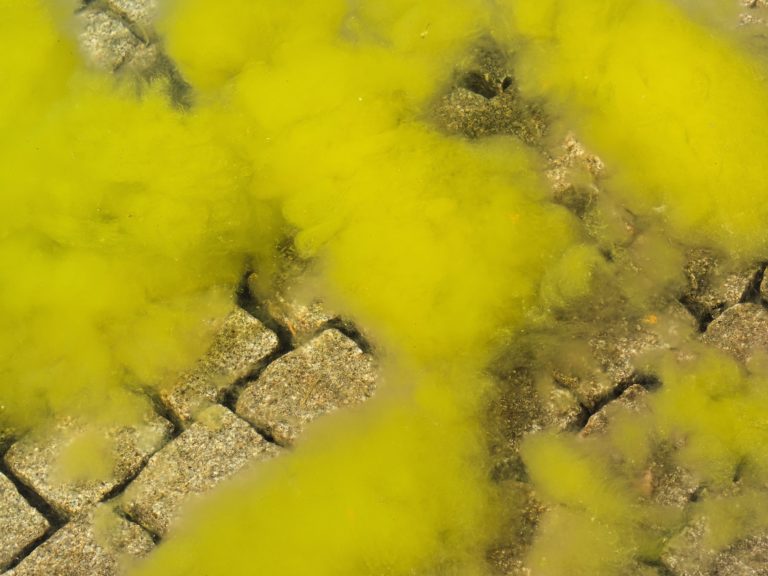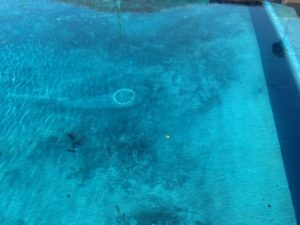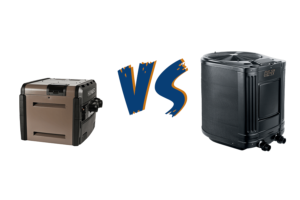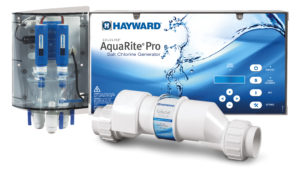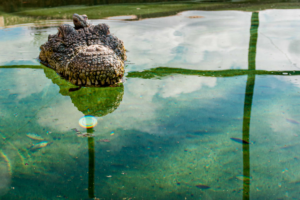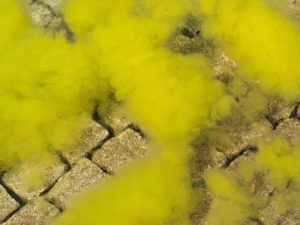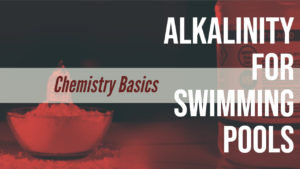How To Identify
Although its name is “yellow algae”, the coloration is often a yellowish-green. However, unlike typical green algae where the patches of algae are often slimy or difficult to brush away, yellow algae tends to behave almost like dust.
A swipe with a hand over a step or a brush along the wall will send up a cloud, which is one of the clear indicators of it being yellow and not green algae that you are dealing with.
Yellow algae is relatively common and almost every swimming pool will get some at some point.
Causes of Yellow Algae
There are many variables at play when it comes to yellow algae, but the two constants are a lack of filtration and lack of chlorine.
When it comes to effecting those two constants, factors such as pump speed, run time, sanitation method, bather load, and even the weather all have a part to play. For instance, if your pool is in Central Florida in the middle of August, six hours of pump run time is almost definitely not going to keep the pool clear. Realistically, you’d want to start with at least 8 hours of run time.
Consider as well the state of your filter. It’s all well and good trying to put water through it but if it is clogged, broken, or needs repair the likelihood of having the algae appear is once again increased.
Leaks are another major factor in the cause of yellow algae. Leaks make maintaining proper amounts of chlorine near impossible as you can never maintain the stabilizer levels that help make the chlorine effective in the heat and sunshine. This is vital to swimming pools here in Florida. A leak will also affect your salt pool by removing the salt it needs for the system to produce chlorine.
Typically yellow algae pops up as we transition from winter into spring in Florida. Here in Orlando, we went from 60 degrees in February to 90+ in March. The rapidly increasing heat and humidity make for a much better environment for the algae to grow in our pools as well as our screen enclosures. The rain or a pressure washer can then take all of that algae from the screen directly into the pool.
How To Treat Yellow Algae
Treatment for mild to moderate cases is quite simple and often doesn’t require any specialized sort of chemicals or equipment beyond the normal pool service kit.
What You’ll Need:
- Chemical test kit
- Chlorine
- Hose & jet sprayer
- DE if you have a DE filter
- Pole
- Brush
- Net/vacuum
- Test your chemistry to find where you need to begin balancing. The important things to look for at this time are your free chlorine and stabilizer levels.
- Clean or replace your filter cartridge with the hose and spray nozzle. If the bands on the outside are ripping, it is time to replace it.
- If you have a DE filter, backwash & re-charge the filter.
- Shock the pool by increasing the chlorine level by at least 20 parts per million. you can read about how to shock your pool here
- Net or vacuum any debris from the pool
- Brush all surfaces of the pool, it may go very cloudy – that is okay!
- Open both the skimmer and main drains of the pool. *If you have a vacuum you may use that instead of the main drain
- Set the pump to run for 24-hrs
- Clean the filter on either the next service visit or after the initial 24-hour period
For severe cases of yellow algae, an algaecide may be required at the end of the brushing step. We recommend Algatecs polyquat algaecide, SeaKlears copper algaecide, and the Pool Rx as our top 3 algaecides.
How To Prevent This In The Future
The best method of any algae prevention is routine chemical balancing and filter maintenance.
Once a week, test the chemistry of your pool to keep everything in balance. If you need any help with understanding chemistry, the best place to start would be here with the chlorine section of our pool chemistry basics series.
Cartridge filters should be routinely cleaned at least once every 3 weeks and often weekly once summer begins to hit, especially in Florida. DE filters should get a backwash once every 3 months and a complete teardown annually to ensure there’s no damage and to extend their life cycle.
There are so many factors, but at the end of the day, they all affect just two things – the chlorine & flow. Focus on maintaining those two things and preventing yellow algae should be no problem.
FAQ
Generally no, it would only be required In some incredibly severe cases with high levels of TDS.
Poor filtration and low sanitation (usually chlorine)
Yes, they are the same.
Free is the more important one for testing to find out how much effective chlorine is in your pool.

